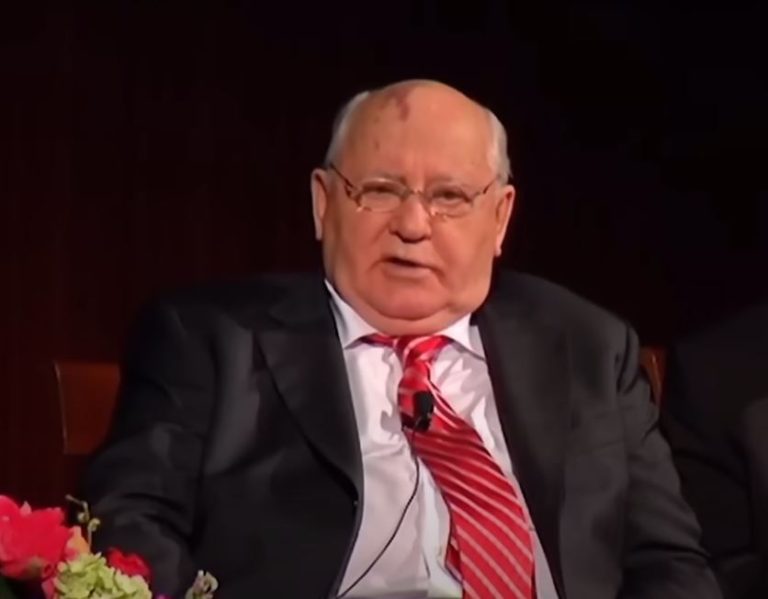In a political environment characterized by stoicism and secrecy, Raisa Gorbacheva stood out as an articulate partner who profoundly changed the definition of what it meant to be a Soviet leader’s wife, rather than as a supporting character. Raisa was intellectually rooted, physically present, and emotionally invested in the people her husband was attempting to reach as Mikhail Gorbachev led a country through perestroika and glasnost. In addition to being symbolic, her presence was incredibly successful in presenting a more approachable and gentle style of leadership throughout the Soviet Union and beyond.
Raisa’s impact during her tenure as First Lady went well beyond formal appearances. She subtly changed public perceptions of what a political spouse could accomplish by launching herself into philanthropic work, especially for children’s health and cultural heritage, by utilizing her academic background in sociology and philosophy. Raisa brought purpose, intelligence, and compassion to the role of first lady, whereas previous first ladies had been relegated to the background.
Raisa Gorbacheva – Key Facts and Public Contributions
| Detail | Information |
|---|---|
| Full Name | Raisa Maximovna Gorbacheva (née Titarenko) |
| Born | January 5, 1932 – Rubtsovsk, Soviet Union |
| Died | September 20, 1999 – Münster, Germany |
| Education | Moscow State University; Moscow State Pedagogical University |
| Profession | Philosopher, Sociologist, Philanthropist |
| Spouse | Mikhail Gorbachev (m. 1953–1999) |
| Public Role | First Lady of the Soviet Union (1985–1991) |
| Key Focus Areas | Pediatric leukemia support, cultural preservation, women’s education |
| Notable Achievement | Raised millions for children’s hospitals and helped improve access to leukemia treatments in Russia |
| Source Reference | Raisa Gorbacheva – Wikipedia |
Hand in Hand Through Time: A Marriage Based on Vision and Equality
Their relationship was very unconventional by Soviet standards. In contrast to many leaders who upheld strict emotional boundaries, Gorbachev publicly and privately praised his wife’s friendship. In a particularly intimate interview, he revealed, “We took each other by the hand and walked like that our whole life,” articulating their relationship with the clarity of a lifelong confidant. This partnership was driven by respect for one another, a common intelligence, and an unwavering sense of humanity; it was not a political alliance.
Raisa had a stroke during the 1991 coup attempt, which was a particularly potent moment. After the failed putsch, Gorbachev hurried to the hospital in Moscow rather than trying to regain control. He subsequently wrote, “I wasn’t married to the country—I was married to my wife,” sending a message that struck a deep chord with generations growing more skeptical of performative patriotism.
Not Like Any Other First Lady
Raisa stood out in the context of Soviet governance, where privacy frequently took precedence over personality. When she traveled abroad, she exuded warmth and authority by dressing tastefully, speaking with poise, and sharing her knowledge. Her attendance at summits, which included trips to the US and the UK, gave the world a new perspective on the USSR that was characterized by tact, communication, and compassion.
However, she wasn’t always welcomed at home. Her prominence served as a diversion for many citizens who were struggling with the unpredictability of late-stage socialism. Nevertheless, her philanthropic endeavors, especially her support of pediatric cancer treatment, had an indisputable influence. She raised millions of rubles to support treatment facilities and research by the time of her leukemia death in 1999, providing thousands of needy families with real assistance.
A Tradition Maintained by Music and Memory
Gorbachev remained devoted over time. He continued to pay tribute to Raisa in remarkably poignant ways over the course of the following 20 years. With the proceeds going to the charities she founded, he released Songs for Raisa in 2009, a very personal album that included duets with Russian musicians. He later reflected on their life with the kind of tenderness that is rarely seen in world leaders in his memoir Alone with Myself.
A life-size statue of Raisa is located next to his grave in Moscow’s Novodevichy Cemetery, serving as a visual reminder of their union. They stand side by side even in death, signifying a marriage that significantly enhanced the public’s comprehension of loyalty, love, and leadership.
Why Raisa Continues to Motivate
Few couples have so publicly embraced emotional transparency as a strength in the context of political partnerships. Raisa was extremely versatile, not only as a spouse but also as a cultural figurehead in her own right, thanks to her ability to strike a balance between her public persona and her personal beliefs.
Her influence is still especially helpful when considering contemporary leadership models that place a greater emphasis on relational intelligence and empathy. Raisa’s authenticity—sincere, grounded, and emotionally rich—stands out in an era of carefully manicured media optics and curated personas.
Raisa Gorbacheva did more than simply follow a reformer; she co-authored a new vision for leadership in which intimacy and intelligence advanced together by transforming the traditionally opaque role of First Lady into one of visibility and value.




